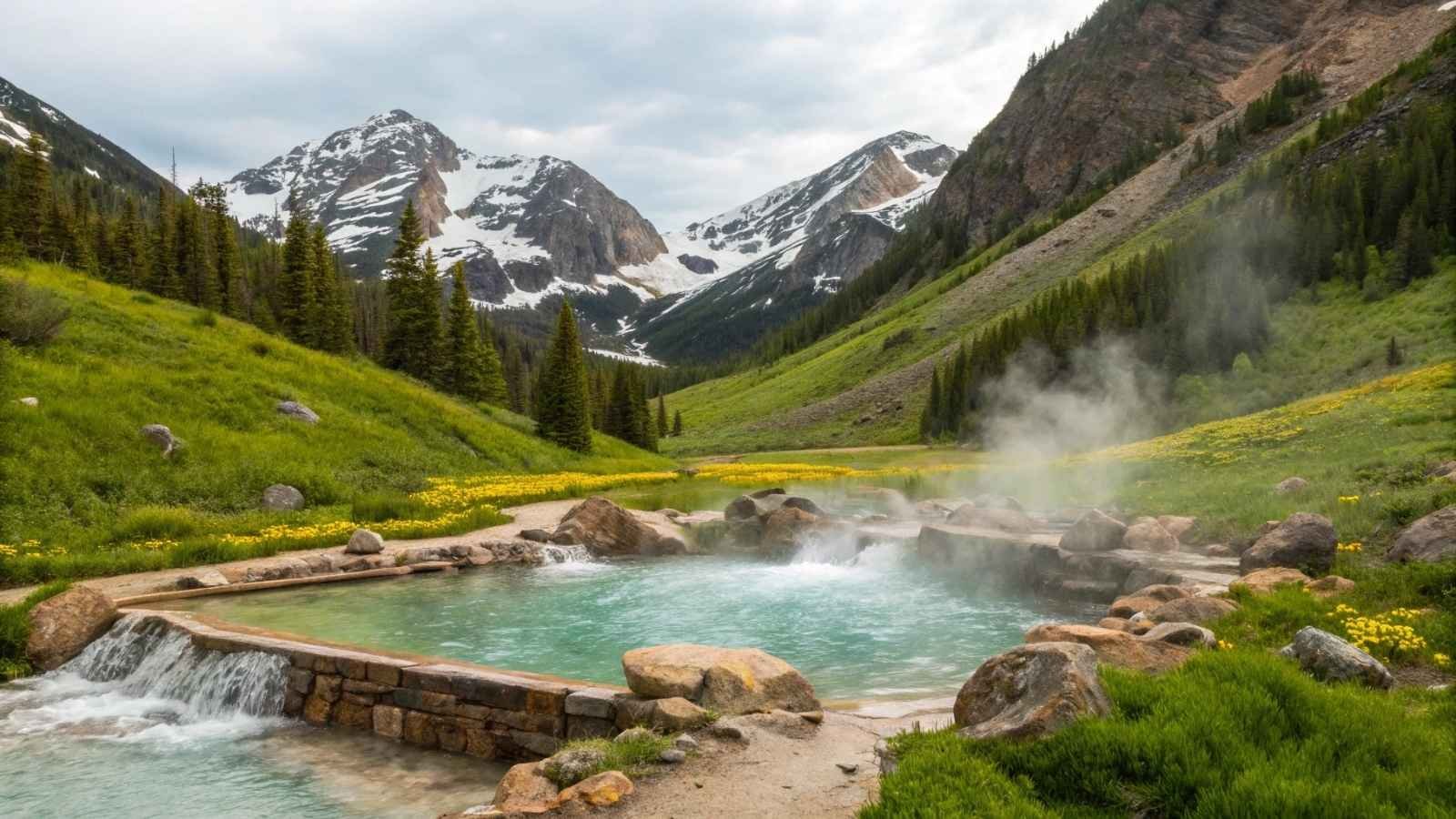
There’s a thrill in finding a place that feels like it was meant just for you. No crowds. No signs. Just raw, untamed beauty hiding in plain sight.
These aren’t the postcard spots—they’re the quiet corners of America’s wild heart that make you stop mid-step, breath caught, completely undone. The kind of places that don’t brag but stay with you long after you’ve left.
If you’ve ever craved a trail that surprises you, a view that silences your thoughts, or a secret only a few ever find, you’re in the right place. Let’s chase the wild that still whispers.
1. The Enchanted Valley Chalet Ruins – Olympic National Park, Washington

Tucked deep in the wilderness of Olympic National Park, there’s a place so hauntingly beautiful that locals call it the “Valley of 10,000 Waterfalls.” It’s where lush rainforests give way to towering cliffs, and somewhere along the East Fork of the Quinault River, the bones of the Enchanted Valley Chalet still stand. Once a cozy backcountry lodge for hikers, it’s now closed to overnight guests—but what remains is straight out of a fairytale.
Hiking in takes commitment—13 miles one way, mostly through moss-draped forests and wooden bridges—but every step feels like stepping further into a forgotten world. Along the way, the river glimmers beside you, and once you reach the valley, it hums with waterfalls cascading down from all directions. The old chalet sits proudly in a meadow, dwarfed by cliffs but somehow more majestic for it.
If you catch it on a misty morning, it looks like something out of a Studio Ghibli film—quiet, slightly eerie, but deeply magical. I once camped nearby and woke to elk grazing around the structure as clouds curled around the peaks. It felt like time had stopped.
Useful Info:
- Best Months to Visit: Late May to September (snow-free trails)
- How to Access: Trailhead at Graves Creek, a 13-mile one-way hike
- Permit Required: Yes, for overnight camping
- Trail Difficulty: Moderate to strenuous (especially with gear)
- Don’t Miss: Early morning wildlife, and the meadow just beyond the chalet at sunrise
2. Conundrum Hot Springs – Near Rocky Mountain National Park, Colorado

Hidden high in the Elk Mountains near Aspen, Conundrum Hot Springs is nature’s rooftop spa. And though it’s not technically within the borders of Rocky Mountain National Park, it’s still part of protected wilderness and just close enough to count as a best-kept secret for adventurous parkgoers. What makes it special? It’s one of the highest-elevation hot springs in North America—perched at 11,200 feet.
Getting there isn’t easy—it’s an 8.5-mile uphill trek with elevation gain that’ll make your legs burn—but the reward is unreal. Imagine soaking in a steamy, natural pool with nothing but jagged alpine peaks and maybe a few mountain goats watching from afar. The water’s around 100°F, perfectly warm even with snowcapped views all around you.
I remember the stars being so clear up there, it felt like we were floating in space. And there’s something about cooking a freeze-dried meal under the Milky Way that makes you feel like you’ve really earned it.
Useful Info:
- Best Months to Visit: July to early October
- Permit Required: Yes, and very limited – reserve months in advance
- How to Access: Trailhead near Aspen, Colorado
- Trail Difficulty: Strenuous due to elevation
- Important Note: No fires allowed, strict pack-in/pack-out rules
3. The Tufa Cathedrals of Mono Lake – Near Yosemite National Park, California

Just east of Yosemite, in a land that feels like a forgotten lunar world, lies Mono Lake—home to otherworldly towers called tufa spires. They rise out of the lake in crooked clusters, looking like something built by aliens or pulled from a dream. Most travelers miss this spot entirely, zooming past on their way to the more famous Yosemite gates.
But Mono Lake is a gem. It’s twice as salty as the ocean, and the lake’s high alkalinity is what causes the limestone formations to grow. The best time to see them is at sunrise when golden light hits the tufa and turns the entire landscape into something surreal. You’ll probably spot a few photographers lying in the brush, completely spellbound.
One early morning I stood barefoot in the shallow water with brine shrimp swirling around me, while a group of migratory birds soared overhead. There were no crowds, no noise—just silence and strange beauty.
Useful Info:
- Best Months to Visit: May to October (especially good for sunrises)
- How to Access: Mono Lake South Tufa area off Highway 395
- Permit Required: No
- Trail Difficulty: Easy walk, wheelchair-accessible boardwalks
- Photography Tip: Get there 30–45 mins before sunrise for the best light
4. The Crystal Cave – Sequoia National Park, California
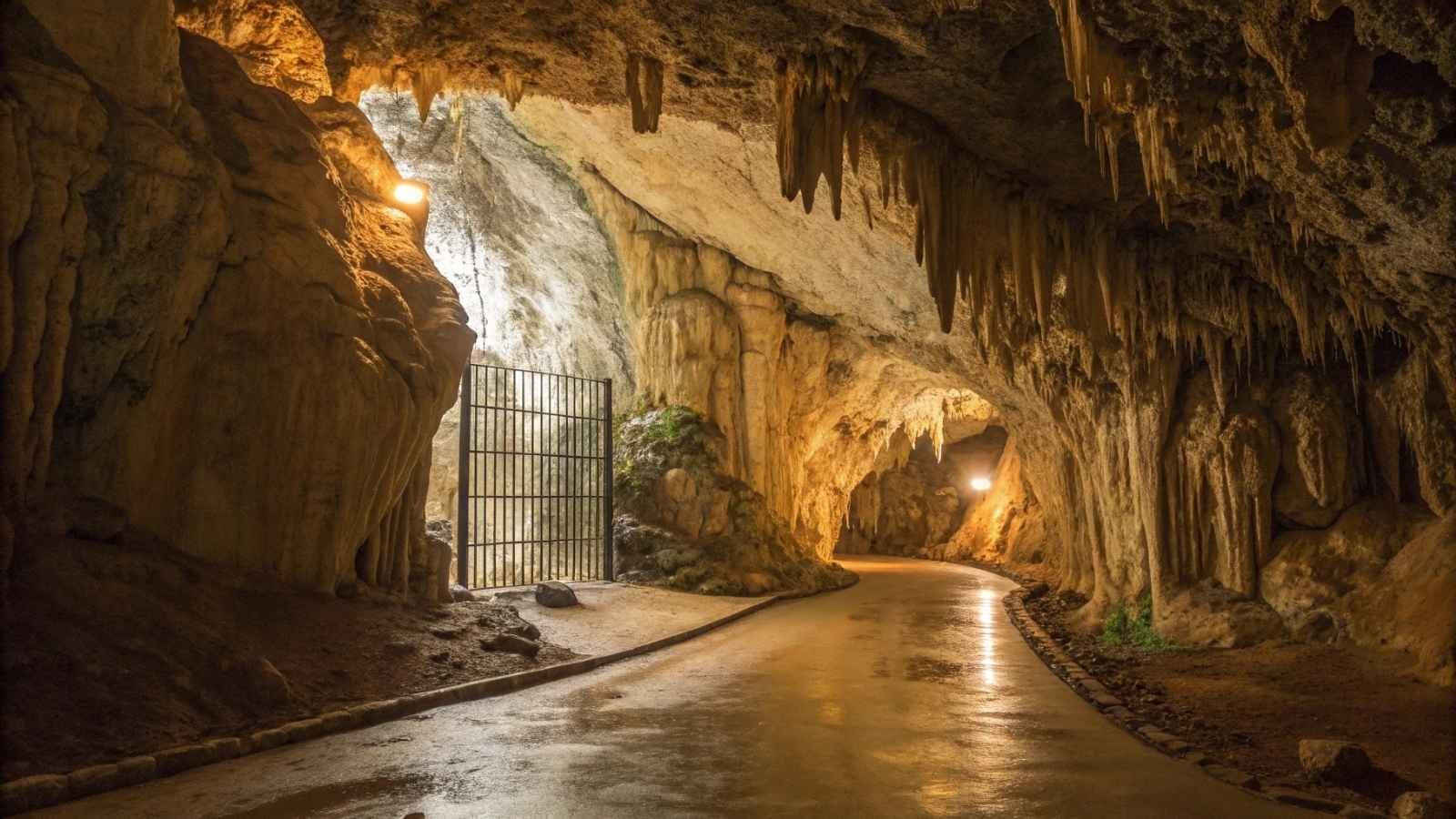
Sequoia National Park is known for its giant trees, but beneath the forest floor hides something even more mesmerizing: Crystal Cave. Most folks don’t even know it exists, and even fewer make the detour to see it. It’s a marble cave with rooms full of glimmering stalactites, stalagmites, and flowstone walls that look like they were iced over by ancient gods.
Tours are ranger-led, and the moment that steel door creaks open and the cool cave air hits you, it feels like stepping into another planet. The lighting is subtle and dramatic—highlighting the shimmering crystals and the weird, wavy walls. It’s cool in temperature, but there’s a quiet thrill to being underground surrounded by glinting rock that’s thousands of years old.
I still remember how the guide turned off the lights for a moment inside—the kind of darkness you feel more than see. It was humbling in the best way.
Useful Info:
- Best Months to Visit: May through November (cave closes in winter)
- Permit/Ticket Required: Yes, reserve tour tickets in advance
- How to Access: 15-minute drive from the main road, followed by a 0.5-mile downhill trail
- Trail Difficulty: Easy/moderate (but uphill hike out)
- Tip: Bring a jacket—it’s always cold inside (~50°F)
5. The Phantom Forest Boardwalk – Great Smoky Mountains National Park, Tennessee

Nestled in a remote patch of the Smokies is a place that looks like a ghost story come to life. The Phantom Forest isn’t marked on most maps, but if you hike early near Cataloochee Valley, especially on misty mornings, you can stumble into this forgotten boardwalk leading into what looks like an ancient, flooded forest.
Fog clings to the trees, moss dangles like cobwebs, and the water mirrors it all so perfectly that it’s hard to tell where the forest ends and its reflection begins. This is where you go to feel small, quiet, and connected. You won’t find crowds here—just birdsong, rustling branches, and maybe an elk stepping through the shadows.
I wandered through one October and felt like I’d found a scene from a forgotten Southern gothic novel. There’s no cell service, and that’s part of the magic—you’re present.
Useful Info:
- Best Months to Visit: October for peak mist and color
- How to Access: Near Cataloochee Entrance, hike early in the morning
- Permit Required: No
- Trail Difficulty: Easy to moderate
- Wildlife: High chance of elk sightings, especially around sunrise
6. Firefly Synchrony Meadows – Great Smoky Mountains National Park, North Carolina
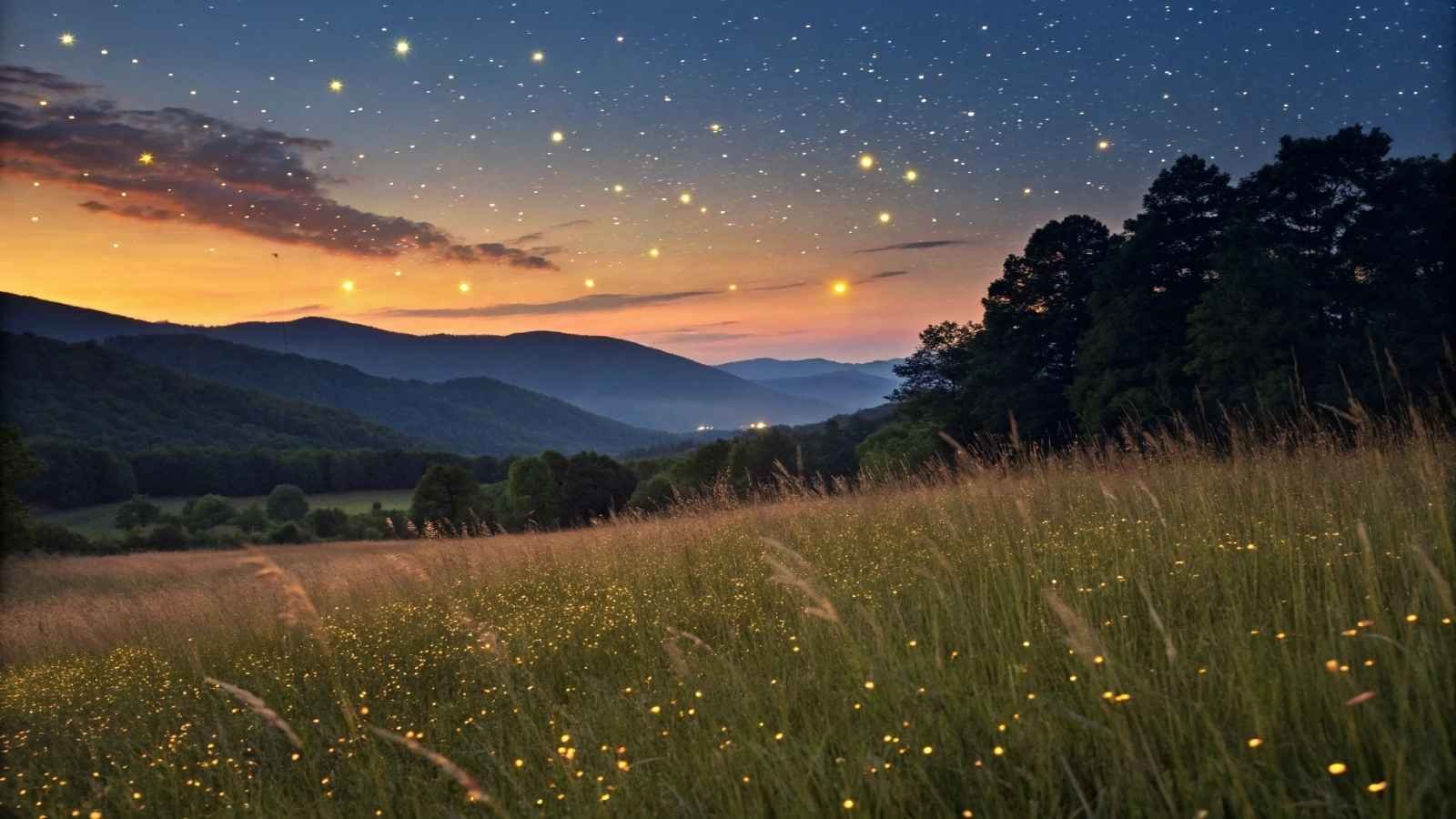
There’s a stretch of trail in the Smokies that turns into a living light show for just two weeks a year. We’re talking about the elusive synchronous fireflies—a rare species that sync up their blinking, creating a wave of glowing lights that ripple through the forest like a silent symphony. And yes, it’s as mesmerizing as it sounds.
The show happens in early June, and only in specific meadows and ridges near Elkmont. If you catch it on the right night, the fireflies flash in unison—entire groves pulsing like they’re breathing together. The air is still, almost reverent. People speak in whispers and sit on logs as if they’re at a sacred performance. And it kind of is.
I once sat next to a 70-year-old woman from Tennessee who had waited her whole life to see them. She cried quietly beside me, and I’ll never forget that. Nature doesn’t always need to roar. Sometimes it whispers, and it still shakes you.
Useful Info:
- Best Months to Visit: Early June, during peak firefly season
- Permit Required: Yes, a lottery-based system for parking passes
- How to Access: Elkmont entrance, limited shuttle service to the trailhead
- Tip: Bring red-light flashlights (white light ruins night vision)
- Pro Tip: Book nearby camping well in advance—it sells out fast
7. Secret Lava Tube Caves – Craters of the Moon National Monument, Idaho
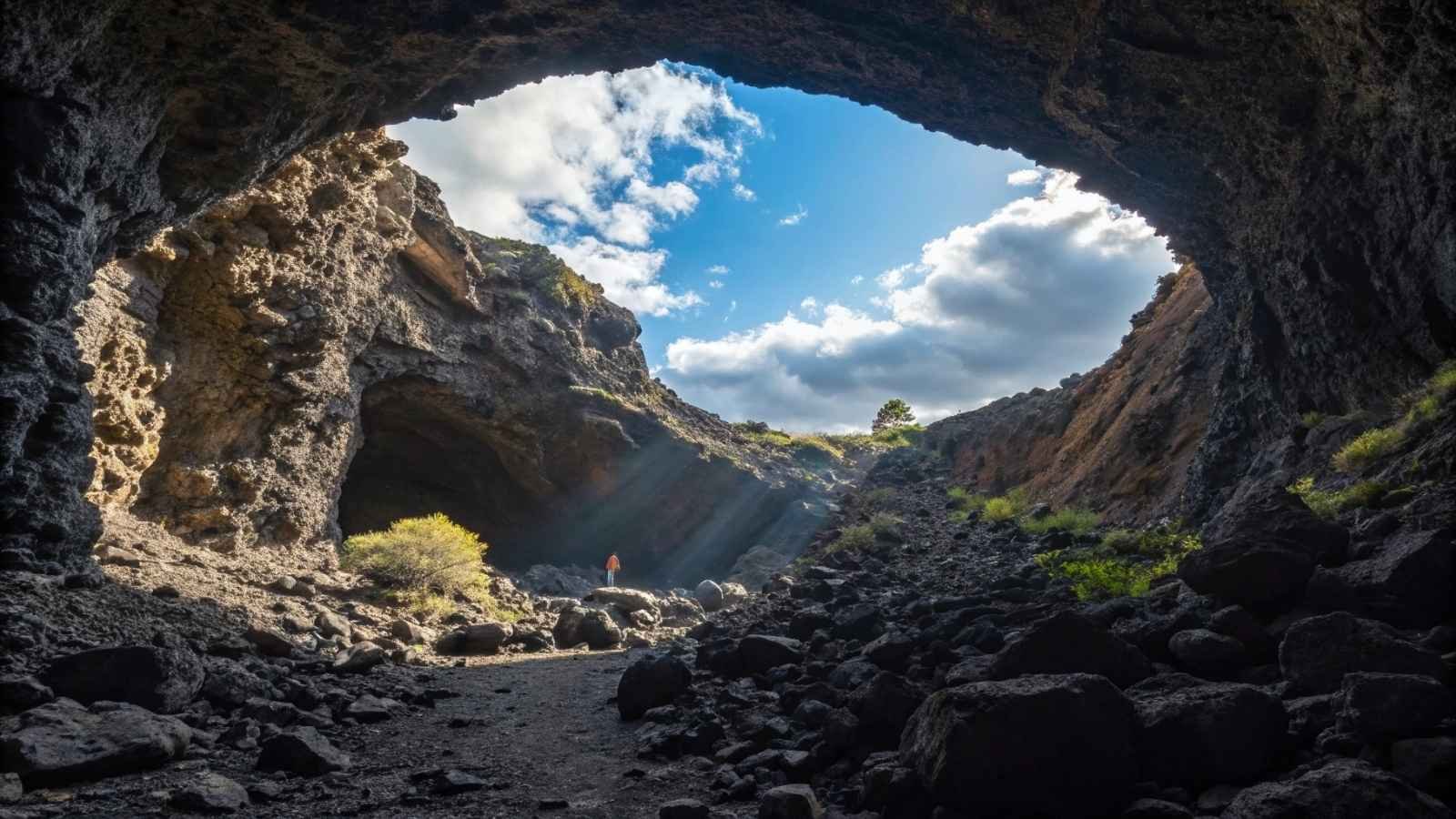
Technically a National Monument, but managed by the National Park Service, and trust me—it earns a spot on this list. Craters of the Moon looks like Mars had a bad day. It’s a vast, black volcanic landscape full of sharp rock, weird colors, and most surprisingly—hidden lava tube caves you can climb inside of.
Underneath the crusty basalt, you’ll find tunnels once carved by flowing lava. Some are big enough to walk through, others require crawling (and a brave heart). You’re literally inside ancient volcanic veins—dark, echoey, and thrilling. Some tubes stay icy year-round, so bring gloves if you’re planning to explore.
I took a headlamp, stepped inside, and immediately lost all sense of time. The silence inside a lava tube? Unreal. It’s like the sound itself gets swallowed.
Useful Info:
- Best Months to Visit: May to September
- Permit Required: Yes, free permit for cave entry at the visitor center
- How to Access: Drive through the park’s loop road, then hike to various cave entrances
- What to Bring: Flashlight/headlamp, sturdy shoes, gloves for colder caves
- Best Cave for Beginners: Indian Tunnel – big, open, and family-friendly
8. Telescope Peak Panoramic Point – Death Valley National Park, California

Death Valley might sound like the last place you’d want to go for peace, but climb Telescope Peak and you’ll be rewarded with an almost spiritual view. From the summit, you can see both the lowest point in North America (Badwater Basin) and Mount Whitney—the highest peak in the Lower 48. That kind of contrast? Wild.
It’s a 14-mile round-trip hike, and not for the faint of heart—the trail starts at 8,000 feet and goes higher. But the shifting views, desert flora, and total silence are part of the reward. The real show is at the top, where you can watch the sunset over 11,000 feet of empty air. The shadow of the mountain stretches for miles.
I had a thermos of coffee at the summit and just sat in stunned silence for a good 30 minutes. No one else around. Just wind, sky, and the kind of panoramic view that doesn’t just stop your heart—it resets it.
Useful Info:
- Best Months to Visit: April to early June, or late September to November
- Permit Required: No
- Trail Difficulty: Strenuous
- Trailhead: Mahogany Flat Campground (4WD recommended to access)
- What to Bring: Layers—it gets cold fast up top, even when Death Valley is boiling
9. The Hermit’s Rest Trail Shelter – Grand Canyon National Park, Arizona

Skip the popular South Rim viewpoints packed with selfie sticks and head to the Hermit’s Rest Trail. At the very edge of the park, tucked beneath rock and shadow, is a historic stone shelter that feels like it was carved for ghosts. Built-in 1914 by Mary Colter (one of the few female architects of the time), it’s both a quiet refuge and a perfect frame for the Grand Canyon’s wilder western side.
The hike down Hermit Trail is tougher than it looks—steep, rocky, and old-school rugged—but every turn offers that “I can’t believe this isn’t on postcards” kind of view. Once you reach the shelter, the canyon yawns out in front of you, and the tourist noise fades into nothing.
The last time I went, I shared the shelter with a raven who refused to leave. It sat on a beam above my head and stared at me like I was interrupting its solitude. That’s the kind of place Hermit’s Rest is—quiet, old, and a little mystical.
Useful Info:
- Best Months to Visit: March to May or September to November
- Permit Required: Not for the shelter or day hike, but required if camping below the rim
- How to Access: Drive west from Grand Canyon Village until the road ends
- Trail Difficulty: Moderate to strenuous if continuing past the shelter
- What to See: Historic fireplace, hand-carved stone benches, sunset through the canyon walls
10. The Hidden Boiling River – Yellowstone National Park, Montana/Wyoming
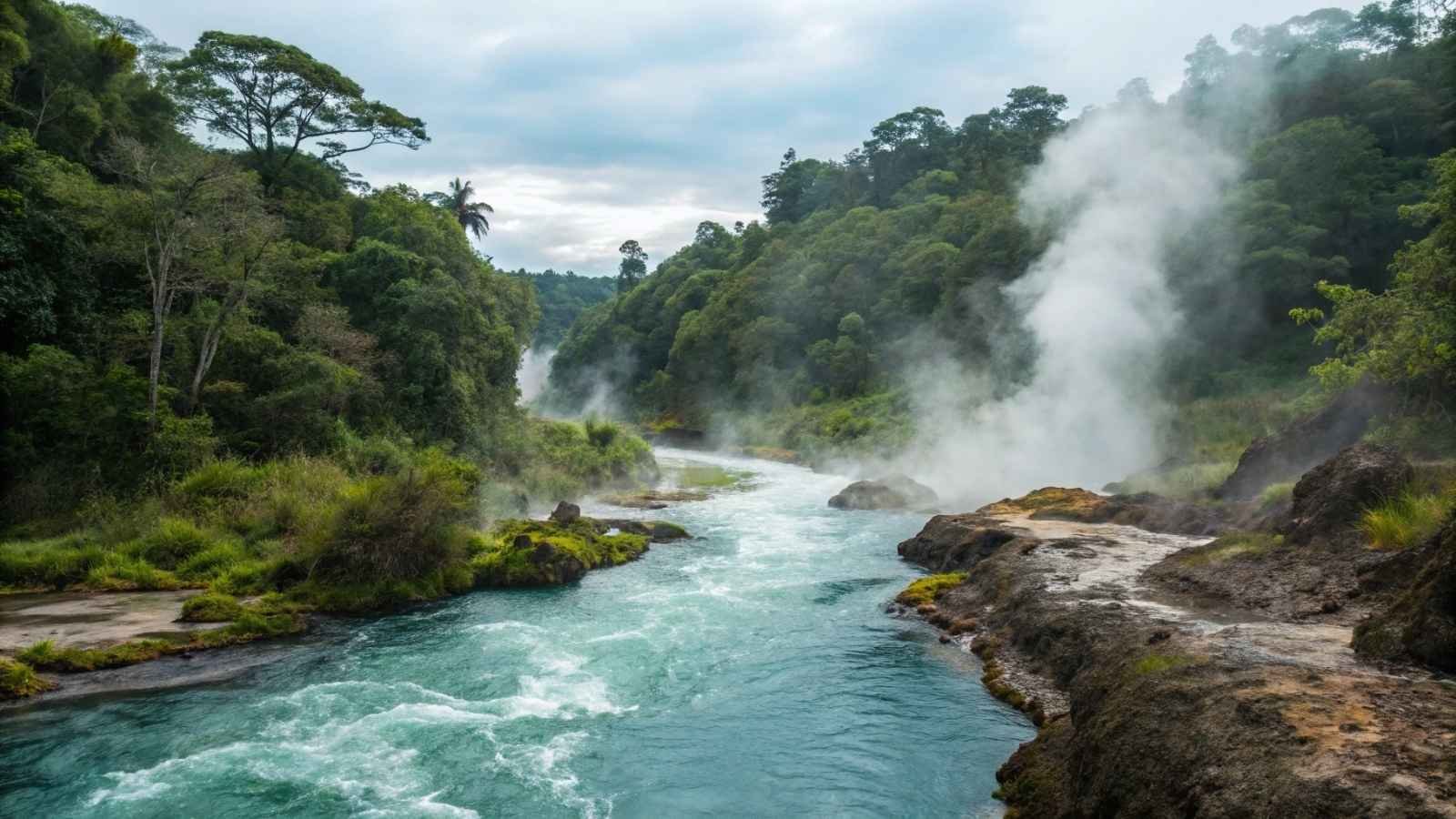
Most visitors to Yellowstone never realize they’re walking right past one of the few legal soaking spots in the park: the Boiling River. It’s where a steaming geothermal spring flows into the Gardiner River, creating a series of natural soaking pools with temperatures that fluctuate like nature’s own hot tub dial.
You’ve got to find the sweet spot—too far left and you’re in freezing snowmelt, too far right and you’re boiling your shins. But when you get it right? Magic. Steam curls into the sky, bison sometimes wander nearby, and if you go early enough, you’ll feel like the river belongs to you.
I slipped in one frosty October morning as the sun cracked over the trees. There was fog everywhere, and my coffee thermos sitting on a rock nearby. No resort on Earth could ever beat that.
Useful Info:
- Best Months to Visit: Late summer to early fall (accessible when the river isn’t dangerously high)
- Permit Required: No, but subject to seasonal closures
- How to Access: Near North Entrance, a 0.5-mile walk from the parking area
- What to Bring: Water shoes (the rocks are slippery), swimsuit, towel
- Important: No soap or food allowed—help keep it clean and open
11. Forgotten Cliff Dwellings – Mesa Verde National Park, Colorado
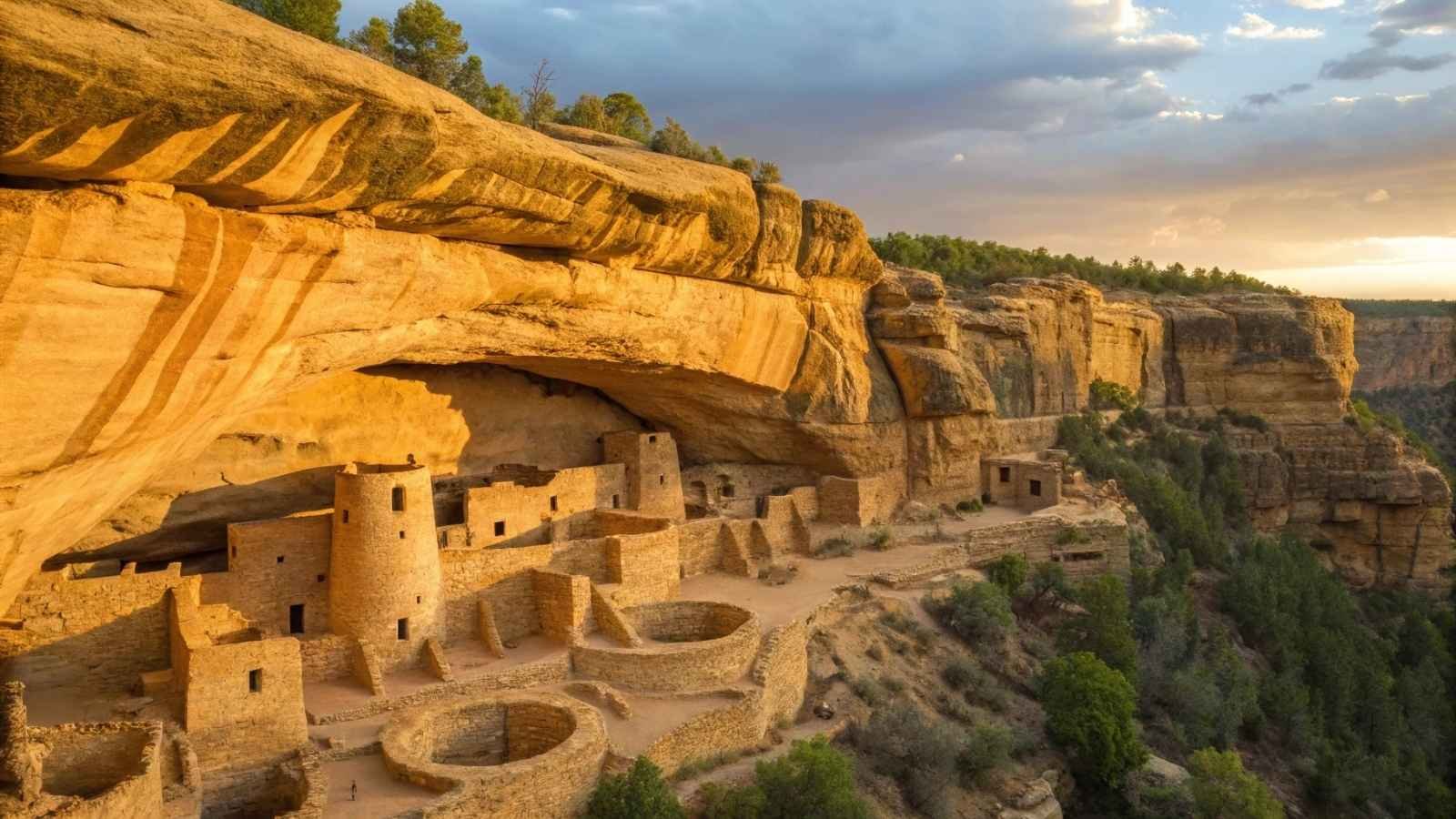
Everyone flocks to the big names here—Cliff Palace, Balcony House, and the guided tours with stairs and ladders. But what most visitors miss are the lesser-known ruins scattered deep in the park’s canyons, where solitude replaces the chatter of crowds. Some of these cliff dwellings remain unmarked and unnamed, tucked into overhangs and mesas like ancient secrets.
Wandering the backcountry trails—especially Wetherill Mesa or Spruce Canyon—you might spot weathered walls built centuries ago by the Ancestral Puebloans. There’s something sacred about standing alone in front of a hand-carved room that’s lasted longer than empires. The silence is thick. You find yourself whispering, even if no one’s around.
I once hiked past a narrow ledge trail, rounded a bend, and froze: a single small ruin clung to the rock, framed by wildflowers and buzzing bees. No signs. No fences. Just a ghost of the past waiting for someone to notice.
Useful Info:
- Best Months to Visit: May to October
- Permit Required: Not for main trails, but backcountry hikes need a free permit
- Trail Suggestions: Petroglyph Point Trail, Spruce Canyon Trail
- What to Bring: Binoculars (many ruins are across canyon walls)
- Be Respectful: These are sacred sites—don’t touch or enter structures
12. High Dune Overlook – Great Sand Dunes National Park, Colorado
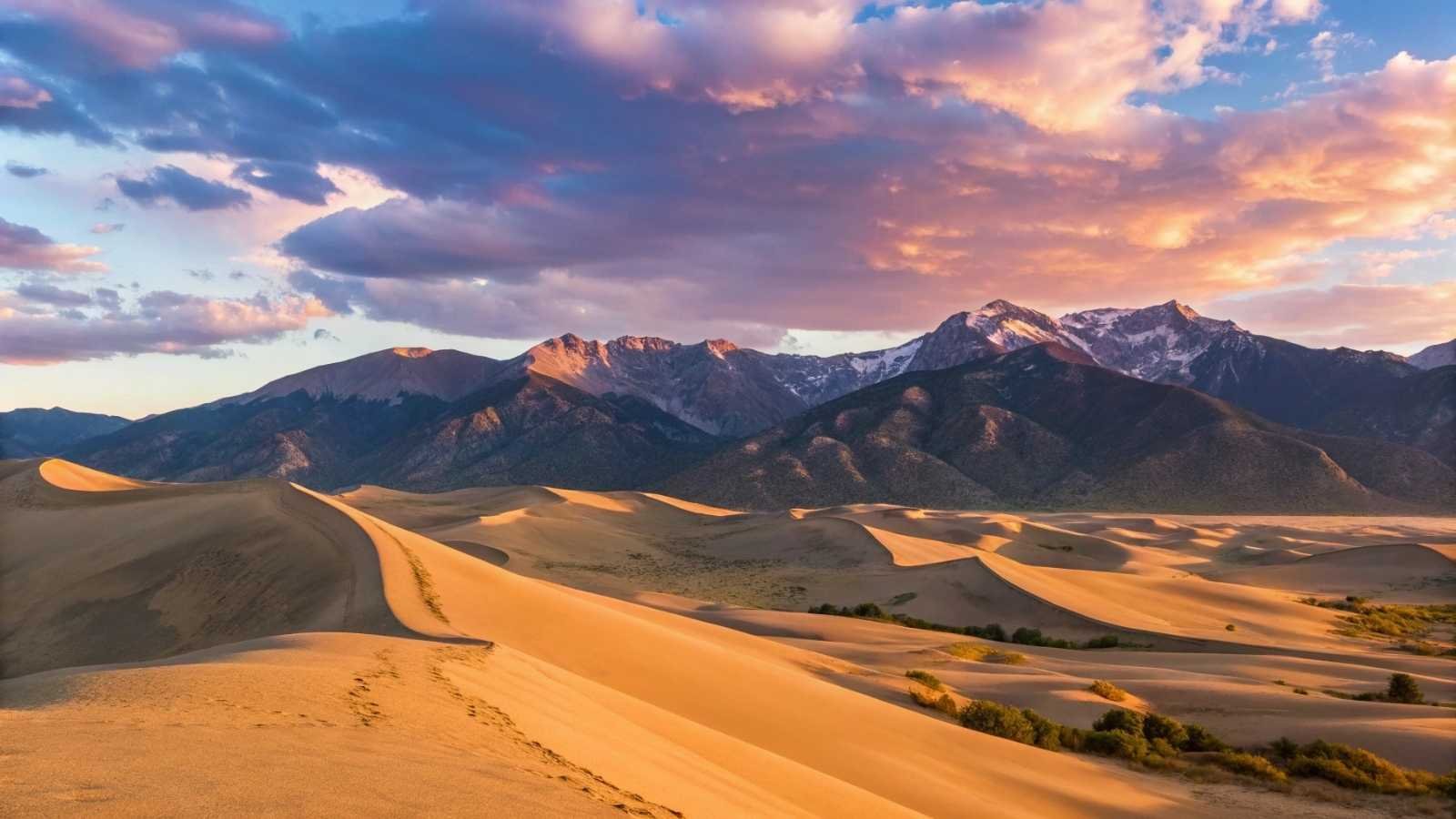
At first glance, Great Sand Dunes looks like a windblown Sahara planted in the middle of the Rockies—and it kind of is. But the real secret lies in climbing the tallest dune you can find and watching the day disappear from above the world’s strangest beach.
Most people stay near the parking lot or splash in Medano Creek, but hike up to High Dune or Star Dune (especially at sunset), and the world transforms. The wind howls. Shadows stretch across waves of sand. It feels like you’re standing on the spine of some ancient beast made of golden dust.
The sand’s soft and unforgiving, so bring grit and patience. You’ll need both. But when you reach the top and see the Sangre de Cristo Mountains glowing behind you? You’ll forget the climb and feel, just for a moment, like you’re standing in the middle of nowhere and everywhere at once.
Useful Info:
- Best Months to Visit: April to June, and early fall (avoid midsummer heat)
- Permit Required: No
- Trail Difficulty: Strenuous but short (~2.5 miles round-trip)
- Footwear Tip: Go barefoot or wear sand gaiters—sand gets everywhere
- Bonus: Try sandboarding or sledding on the lower slopes!
13. Ancient Petroglyph Canyon – Capitol Reef National Park, Utah
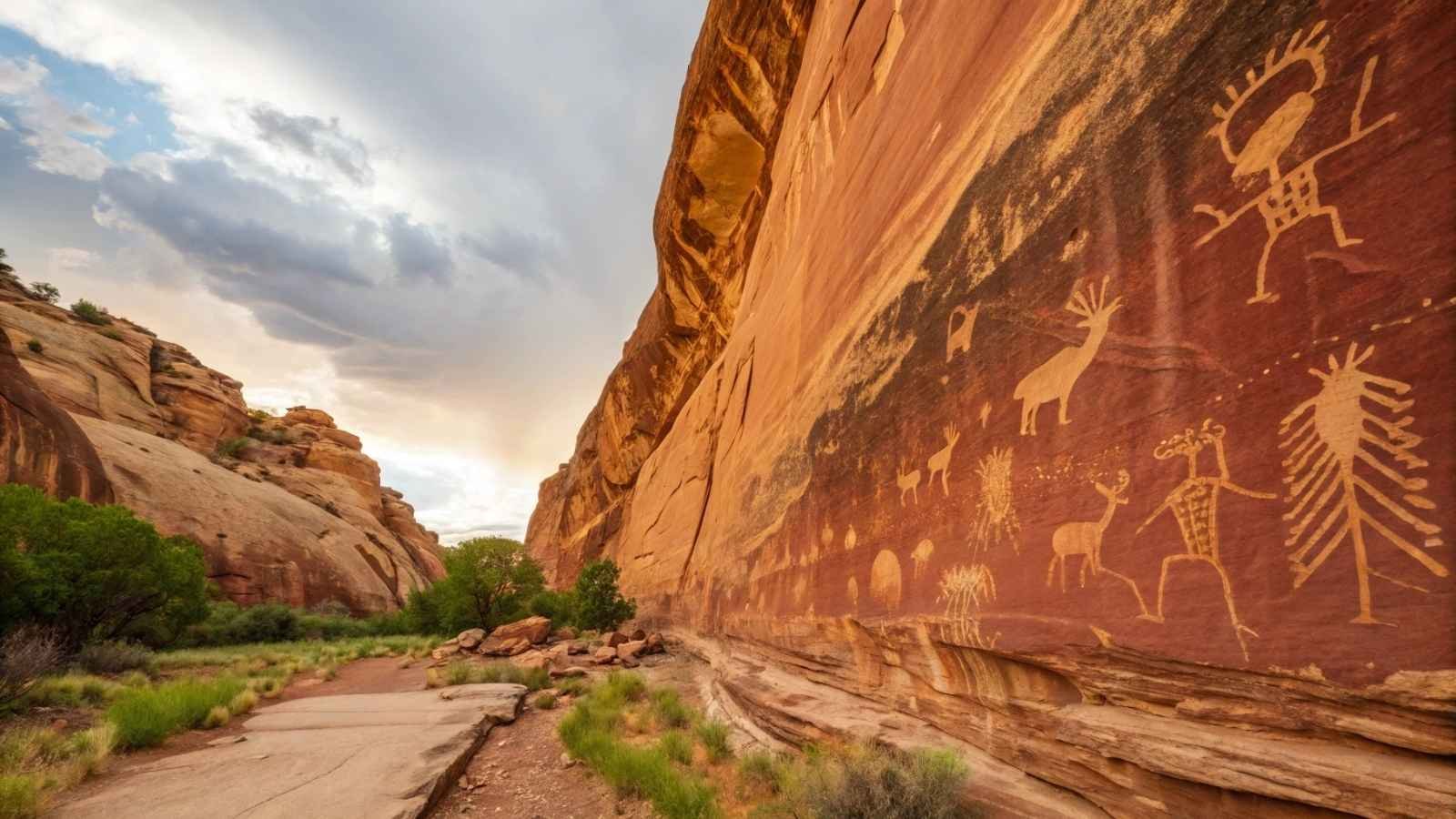
Capitol Reef doesn’t always get the love it deserves, especially compared to its flashy Utah siblings like Zion and Bryce. But tucked into its rust-red cliffs is one of the most easily missed treasures in the park—a quiet boardwalk that leads to Fremont Culture petroglyphs, etched over 1,000 years ago.
These figures—long-necked humans, bighorn sheep, abstract shapes—cover the cliff face like an ancient journal. And what’s wild? Most people drive right past them. There’s no big sign. No souvenir stand. Just a wooden walkway and a few interpretive panels that barely hint at the depth of time hanging in the air.
I visited in the late afternoon once. The sun cast shadows that made the figures dance on the walls. No one else was around. Just me, the canyon, and a thousand-year-old whisper.
Useful Info:
- Best Months to Visit: March to May, or September to November
- Permit Required: No
- How to Access: Just east of the visitor center, right off Highway 24
- Trail Difficulty: Very easy, boardwalk accessible
- Best Time for Photos: Late afternoon, when shadows define the carvings
14. Secret Alpine Lake – North Cascades National Park, Washington
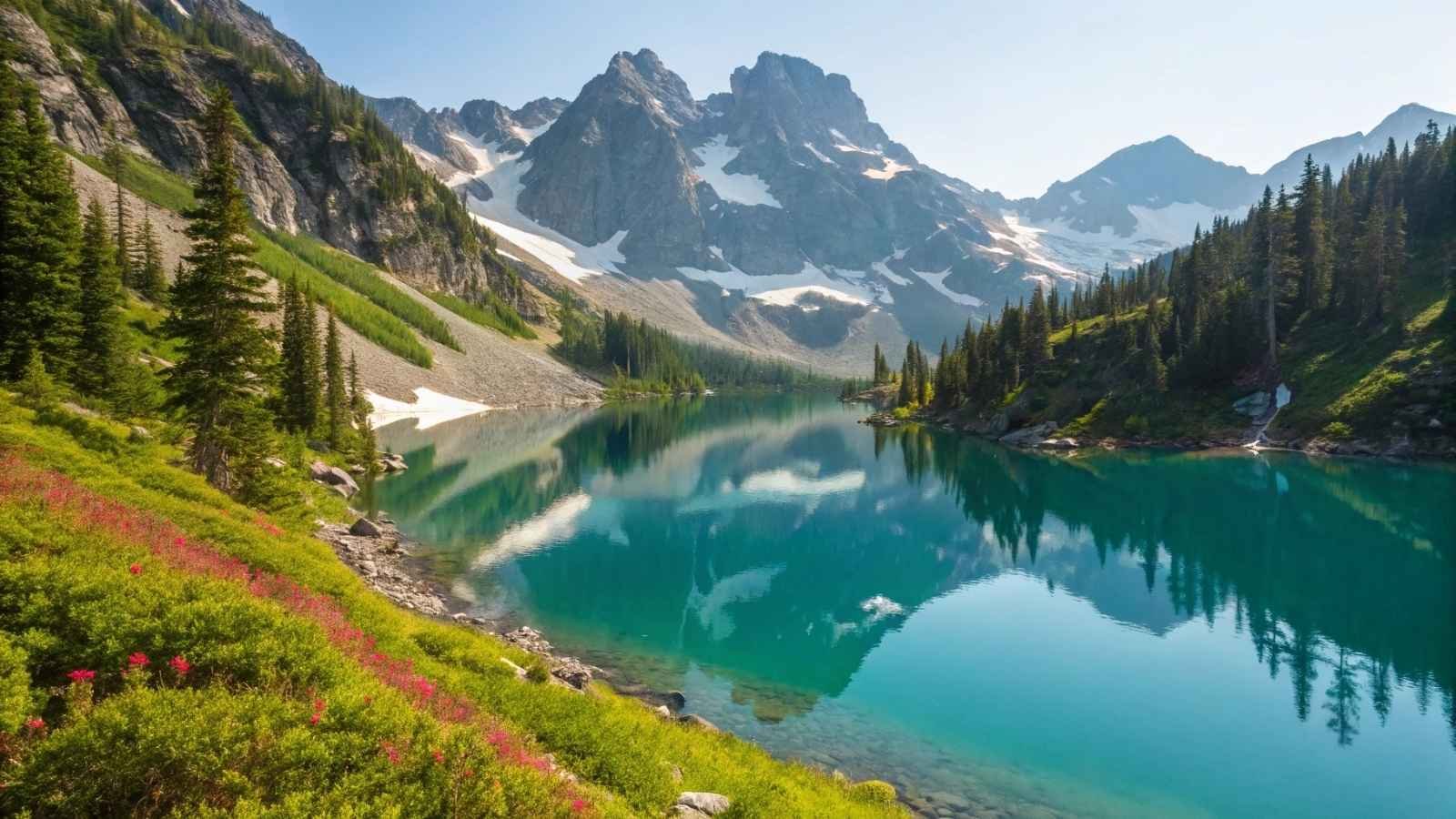
There’s no shortage of jaw-dropping lakes in the Cascades, but one that rarely makes the list—despite its movie-level beauty—is a hidden alpine lake off the beaten path near Cascade Pass. It’s unnamed on some maps, accessible only by a tough, unmarked scramble off the main trail. And when do you find it? It’s a mirror cradled in stone.
Picture jagged cliffs, glacial snowmelt, and silence broken only by wind in the pines. It’s not for the faint of leg or weak of knees, but the reward is peace. Real, actual peace. The kind that makes your stomach drop and your heart lift.
A ranger once told me it was his favorite spot in the whole park, and that was enough for me. When I reached it, I understood. I stayed for hours. Just watching clouds drift across the water.
Useful Info:
- Best Months to Visit: July to early October
- Permit Required: No for day hikes; wilderness permit for overnight
- Trail Difficulty: Moderate to strenuous, some off-trail scrambling
- Best Access: Hike Cascade Pass Trail, then detour westward
- What to Pack: Water filter, mosquito spray, and a sense of adventure
15. Lost Palm Oasis – Joshua Tree National Park, California

Everyone heads to Joshua Tree for boulders, desert blooms, and trippy sunsets—but if you want to feel like a true desert explorer, trek out to Lost Palm Oasis. It’s a 7.5-mile round-trip hike through cactus-speckled wilderness that leads to a shaded palm-filled canyon, hidden like a secret garden.
At the end of the trail, towering California fan palms burst from the canyon floor like a green exclamation mark. It’s one of the few natural oases in the park, and there’s a coolness in the air you can feel as you approach. You’ll probably be alone, or close to it.
The day I went, I sat in the shade, shoes off, listening to birds flitting through the palms. It felt like I had walked into another dimension—one where the desert decided to be kind, just for a little while.
Useful Info:
- Best Months to Visit: October to April (summer heat is brutal)
- Permit Required: No
- Trailhead: Cottonwood Spring
- Trail Difficulty: Moderate, sandy terrain and some elevation gain
- Watch For: Bighorn sheep and blooming barrel cactus in spring
16. Cliffside Cave Ruins – Bandelier National Monument, New Mexico

OK—this one’s a bit of a cheat: Bandelier is a national monument, not a park. But it’s run by the NPS, and it holds a secret most of New Mexico doesn’t talk about enough: cliff dwellings you can climb into, no velvet ropes, no crowds.
Walk the Main Loop Trail, and soon you’ll see small caves carved into volcanic rock, once home to the Ancestral Pueblo people. Some are reached by wooden ladders—yes, you can climb right in. The rooms still bear smoke marks and hand-hewn shelves. It’s intimate and surreal.
One of the caves had fresh flowers left on the floor. No explanation. Just a quiet act of respect in a space full of history. I left feeling grateful that such places still exist.
Useful Info:
- Best Months to Visit: March to May, September to November
- Permit Required: No for day entry, small fee for parking
- Trail Difficulty: Easy to moderate
- What to Bring: Water, sun protection, and shoes with grip (those ladders are no joke!)
- Nearby Bonus: Stay for the night sky—some of the darkest skies in the U.S.






